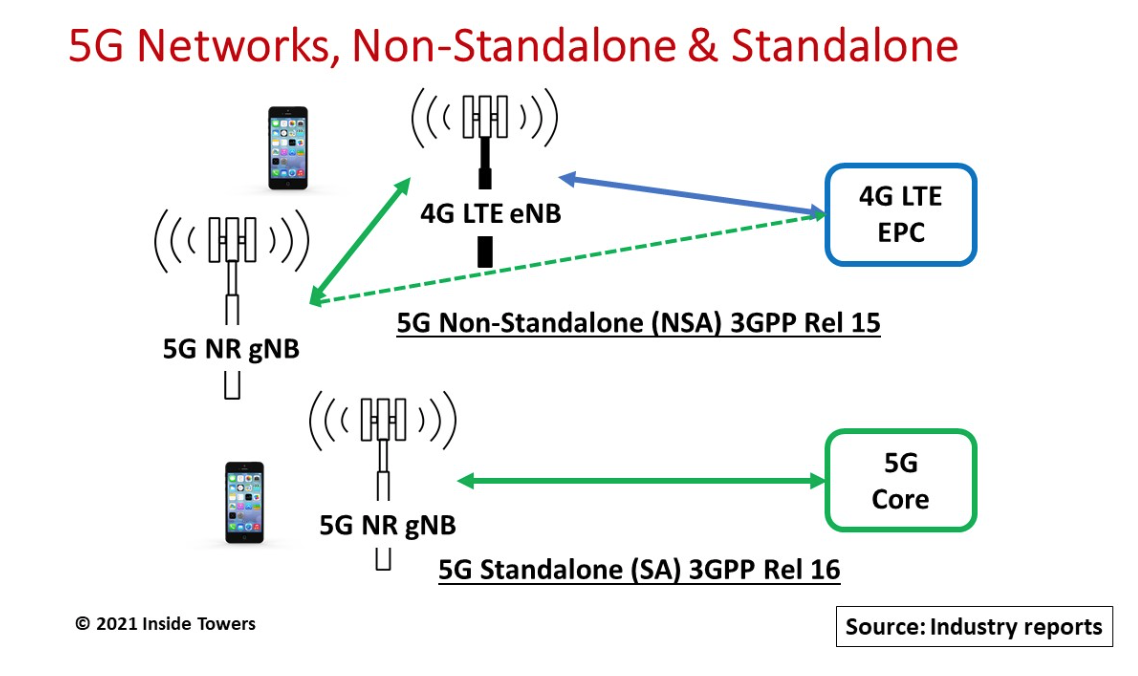Rogers Communications (NYSE: RCI), Canada’s leading mobile network operator, is one of the first MNOs in North America to deliver its 5G services in standalone network mode. In mid-December 2020, Rogers activated its 5G SA network in Canada’s major cities – Montreal, Ottawa, Toronto, and Vancouver.
Rogers’ 5G SA is powered by Ericsson’s dual mode 5G Core. The company partnered with Ericsson in 2018 as its exclusive 5G vendor for its full network infrastructure, including radio access network and core.
The 5G SA deployment complies with 3GGP Release 16 standards. Though 5G mobile devices or user equipment availability currently is limited, Rogers is moving to 5G SA to be ready for new UE releases in 2021 and beyond.
At the same time, Rogers expanded its non-standalone 5G network to 26 new cities and towns in the provinces of Alberta and British Columbia in the west, New Brunswick in the east, Ontario, and Quebec in central Canada, reaching 160 communities across the country.
Rogers counted 10.9 million post- and pre-paid subscribers at the end of 3Q20. Note that the company operates its own network in markets across the country unlike its main competitors Bell (NYSE: BCE) and Telus (NYSE: TU) which share their wireless networks with each other in their respective eastern and western market strongholds. (See, Wireless Network Sharing, Canadian Style).
Rogers is betting 5G will lift results hard hit by COVID-19 in 2020. Through the 9-month period ending September 30, 2020, wireless service revenues were $4.9 billion, down 8 percent on a year-to-year basis, mainly due to reduced roaming and data overage charges. Wireless capital expenditures for the period slowed to $763 million, down 21 percent from $960 million in 2019.
To date, all 5G network deployments worldwide have been non-standalone. With the RAN consisting of dedicated 5G New Radio gNodeB base stations operating on 5G-designated frequencies, all 5G UE call processing and routing functions are handled by a 4G LTE EPC.
In this way, 5G NSA helps MNOs leverage 4G LTE investments before converting to a full SA mode.
Dual connectivity was introduced in the 3GPP Release 15 standard. The technical term for 5G NSA is Evolved-Universal Terrestrial Radio Access-New Radio-Dual Connectivity or simply EN-DC.
5G EN-DC allows UEs to exchange data with the nearest 5G NR gNB while making a simultaneous connection with a nearby 4G LTE eNodeB base station. Dual connectivity is possible when signaling links are established between 4G LTE eNBs and 5G NR gNBs.
In dual connectivity mode, UEs connect simultaneously to a 4G LTE eNB for the control plane and a 5G NR gNB for the user plane. The control plane handles all the signaling between the UE and the network while the user plane is where data is transported between the network and the UE.
Rogers believes that 5G SA will help optimize its radio spectrum for 5G coverage to more Canadians. The company plans to offer a full range of advanced wireless capabilities through ultra-low latency (See, How Low Latency Changes Wireless Network Designs), network slicing that provides industries and businesses with dedicated networks, and mobile edge computing to support critical applications with computing power close to the end user.
“Considered the brain of the network, our 5G standalone core propels us forward on our path to bring the full potential of 5G to Canadians,” said Jorge Fernandes, Rogers’ Chief Technology and Information Officer. “From ultra-low latency to advanced services like network slicing, standalone 5G will support applications and technologies that will have a profound impact on our economy and society.”
By John Celentano, Inside Towers Business Editor





Reader Interactions